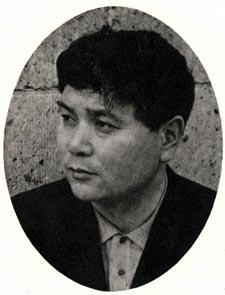Hirose, Ryohei
Biography
Born: July 17, 1930
Died: November 24, 2008 Kyoto
Country: Hakodate, Hokkaidō, Japan
Studies: Tokyo University of the Arts (1955-62)
Teachers: Hidetake Tsutsui; Tomojirō Ikenouchi; Akio Yashiro
Website: http://www.hiroseryouhei.com/
Ryōhei Hirose (廣瀬 量平 Hirose Ryōhei?, b. Hakodate, Hokkaidō, Japan, July 17, 1930; d. Kyoto, November 24, 2008; given name also spelled Ryouhei)) was a Japanese composer. He studied at the Tokyo National University of Fine Arts and Music, with Tomojirō Ikenouchi and Akio Yashiro. He served as a professor in the music department of the Kyoto City University of Arts from 1977 to 1996, afterwards filling various administrative posts there. He has also served as lecturer at the Mozarteum University of Salzburg (1997), Essen Music University (2003), the Kunitachi College of Music (1977–79), and the Tokyo National University of Fine Arts and Music (1991–1998).
He has composed for both Japanese and Western instruments, but is best known for his compositions for shakuhachi and recorder. He has also composed for viola da gamba.
Hirose's recorder music has been widely recorded. See Recorded Recorders for a comprehensive discography.
Hirose died on November 24, 2008.[1]
Additional Bio:
Ryohei Hirose was born in Hokkaido, Japan, in 1930, and studied composition at Tokyo University of Fine Arts and Music with Tomojiro Ikenouchi and Akio Yashiro. His works include instrumental, choral, and electronic compositions, as well as pieces for renaissance or traditional Japanese instruments. The Concerto for Violin and Orchestra (1979), premiered by Yuriko Kuronuma and the Tokyo Philharmonic Orchestra under Tadaaki Otaka, received its American debut in Carnegie Hall at the Music From Japan concert in January 1981.
Hirose's career is marked by several major periods of development. After scoring a composition for traditional Japanese instruments to accompany a 1963 drama by Yoshie Horta, he received a succession of commissions for works incorporating various combinations of Japanese instruments. He became something of a champion of the shakuhachi during this time, when other well-known composers like Makoto Moroi and Toru Takemitsu were developing a curiosity about the instrument, but Hirose, who wished to return the shakuhachi to what he felt to be its essential roots, was clearly following a different path.
In the 1970s, he began to move toward a more western approach, writing for solo percussion, harp, celeste, piano, cello, and viola, among other instruments. This new dimension came to occupy an equal position in his work with the composing for traditional instruments. In fact, they were opposite sides of the same coin: the voice of the solo cello for Hirose is fully capable of singing in timbres recognizable to the traditional Japanese inner ear. An interest in shamanism and deepening spirituality at this time received a sharp boost from two trips to India (1972 and 1973), reflected in a group of compositions during the following years, many of which have Sanskrit titles. Since then, Hirose's music has continued to mirror what seems to some the rough, untamed climate of his native Hokkaido. Through his use of Japanese instruments in a western idiom, one can hear Hirose hurling himself in opposition to various western moral concepts.
Hirose has been awarded numerous prizes both in Japan and abroad. Among these are the Otaka Prize, the National Arts Festival Prize, the IMC (Paris) Prize, and the Festival D'Automne Prize.[2]
Works for Percussion
Composition for Percussions and Viola, Cello - Percussion Duo; Violin; Cello
Illusion for Crystal Glass - Percussion Ensemble
Mosaik - Percussion Sextet
Triptych by "Archaeopteryx Lithographica" - Percussion Quintet
References
